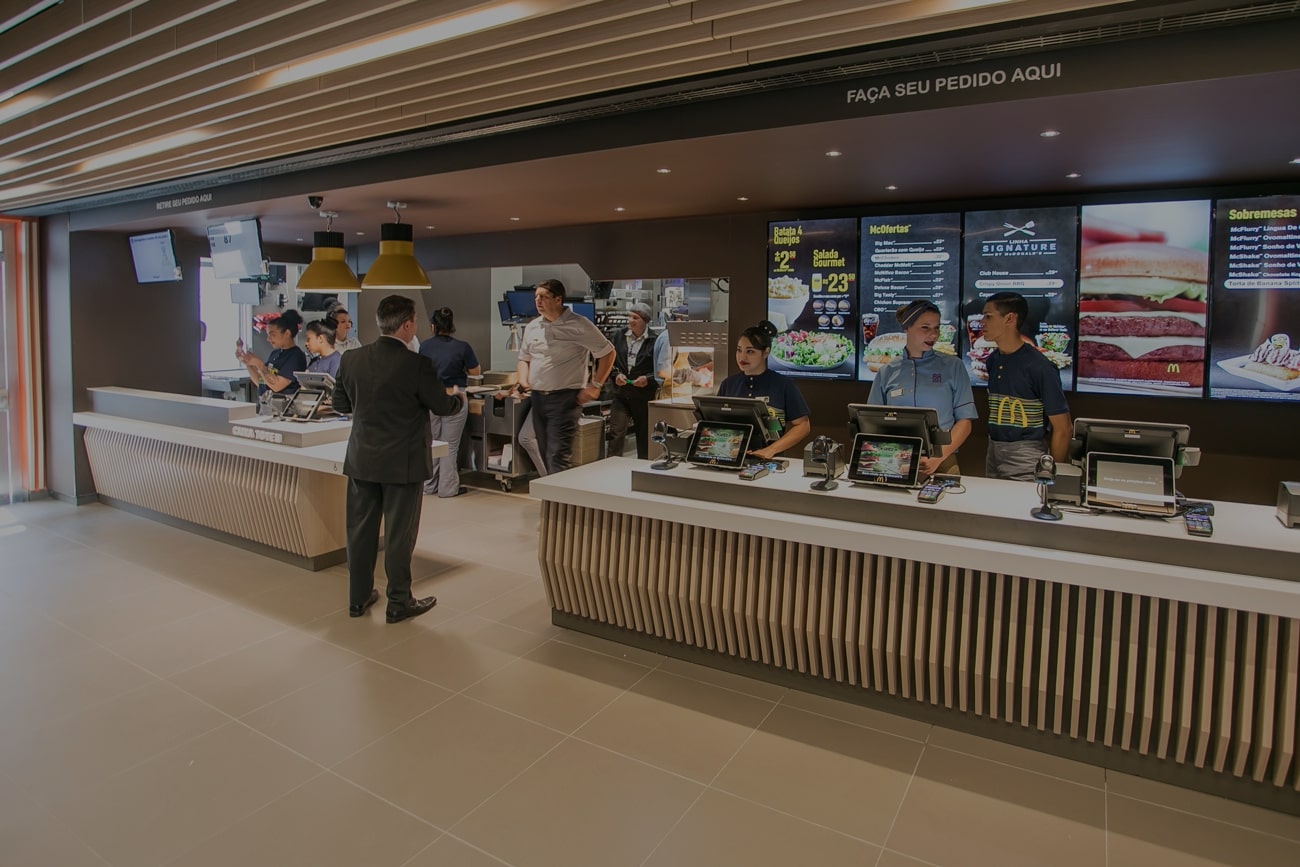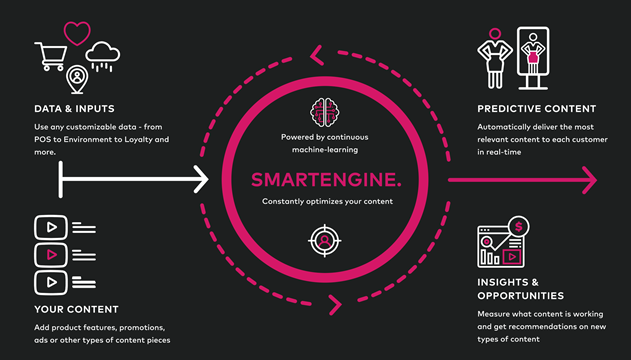
Cineplex Digital Media Launches Machine-Learning Smart Digital Signage Content Engine
October 13, 2020 by Dave Haynes
Toronto-based Cineplex Digital Media has started marketing a new data-driven retail optimization platform called FLEX SmartEngine – using machine learning and a variety of data inputs to boost sales for stores and QSR operators.
The built-in-house platform steadily analyzes what’s happening in and around physical stores to generate and deliver messaging based on shifting circumstances around the venue, as well as variables like supply levels.
CDM’s new platform, the PR says, uses real-time and legacy data from retail and QSR management systems – like POS, inventory and loyalty – and mashes that up with a wide array of 2nd and 3rd party inputs, such as weather, time, and local market info.
That data – as well as marketing content like promotions, product features and scenario-specific messaging – runs through the machine learning platform and is pushed out via a CMS.

There are two key outputs to digital signage:
Predictive content – Dynamically scheduled messaging that is designed to maximize relevance for the shopping moment and customer. Sales are driven, for example, on digital menu displays, by adjusting highlighted offers based on contextual and environmental inputs;
Insights – Operators get a sense of how the screens and overall store is performing, measuring engagement and attributing personalized promotions through things like POS integration.
It’s the whole right-message, right-time, right-audience thing – but automated and dynamic, as opposed to someone sitting down and making educated guesses about where, when and what to schedule for content on screens.
The platform also helps operators improve the system and performance, doing things like highlighting missed promotional opportunities. The customer insights dashboard may reveal, for example, that suggestive selling opportunities were not displayed on screens for the simple reason that there were no contextually relevant messages built and available to serve up.
For example, a screen can’t suggest to customers to add onion rings to an order if the content archive doesn’t have an onion rings message available to show.
The real-time content triggering capability allows network operators to shape content messaging down to the level of single customer profiles, and uses real-time data inputs like gender (from a third-party computer vision stream), weather conditions, buying histories and time of day.
The attraction to this sort of thing is two-fold:
1 – There are obvious bottom line benefits from increasing order sizes and therefore sales numbers through real-time messaging optimization;
2 – There’s also the benefit to operations when you can pretty much set and forget a platform to do dynamic messaging. If a retailer or QSR operator wanted to develop, target, schedule and deliver hyper-targeted messaging, it could be a huge amount of work, and ripe for error.
CDM has been working on this for a while now, and has had pilot testing sites running for about a year now in its moviehouses as well as with a whale client it has had for several years. Now it’s making it available more broadly to customers.
At the moment, it works with CDM’s own content management platform and related toolset, which is all hived under the FLEX banner. But I am told the plan is to have APIs that would let third-party CMS platforms also work with the smart engine software.
STRATACACHE bought the Finnish company Walkbase to add this sort of capability to what it offers, and McDonald’s went a step further and bought an Israeli company called Dynamic Yield, to bring dynamic menus and suggestive selling in-house.



Leave a comment